“Unveiling the Giants: Exploring Rare Large Dog Breeds”
** Introduction **
When it comes to choosing a furry companion, many dog lovers are attracted to the idea of having a large breed at their side. But have you ever considered the allure of rare large dog breeds? These majestic dogs stand out not only because of their impressive size but also because of their unique characteristics and history that set them apart from more common breeds.
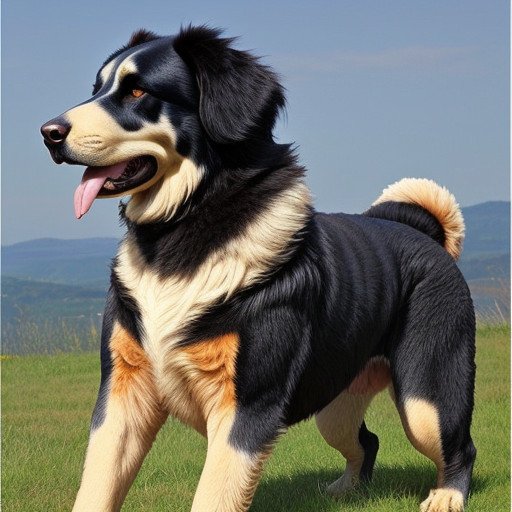
Table of Contents
Rare large dog breeds offer a distinct appeal to those looking for something extraordinary. Imagine walking down the street with a Tibetan Mastiff or Leonberger; These dogs will definitely attract people’s attention and spark conversation. Their rarity often means they have fewer health problems associated with overbreeding, and their distinctive temperaments can provide a delightful mix of loyalty, protection, and companionship.
Owning one of these rare breeds can be a rewarding experience, but it also comes with responsibilities. From understanding their specific care needs to ensuring they get adequate exercise and mental stimulation, owning a rare large dog breed requires dedication and commitment. However, the bond you form with such a unique and magnificent animal can be incredibly gratifying.
In this post, we’ll learn about some of the most fascinating rare large dog breeds, finding out what makes each of them special and why they could be the perfect member for your family.
Why Choose a Rare Large Dog Breeds? ;
Choosing a rare large dog breed can be an exciting and rewarding decision for many reasons. These majestic dogs often have unique qualities and histories that set them apart from more common breeds, offering a distinct appeal to dog lovers.
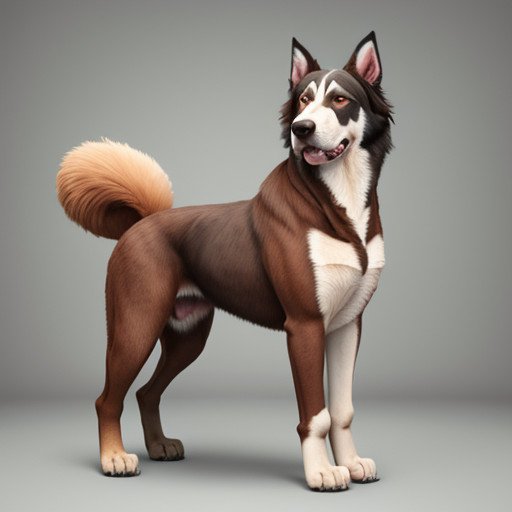
One of the main attractions of rare large dog breeds is their personality. These breeds are not ones you see every day, which makes them stand out in any neighborhood. Their rarity may also mean fewer genetic health problems, as they are often bred with more care and consideration to maintain healthy bloodlines.
Rare large dog breeds also bring a fascinating mix of personalities and characteristics. Many of these breeds were developed for specific purposes, such as guarding, herding, or working with humans in challenging environments. This means they often have a mix of intelligence, loyalty, and protective instincts that make them exceptional companions.
Additionally, owning a rare large dog breed can be a conversation starter and a point of pride. These dogs will definitely attract attention and admiration, allowing you to share your passion for these unique animals with others.
In choosing a rare large dog breed, you’re not just getting a pet; You are getting a unique friend who will bring happiness, companionship and a touch of extravagance to your life.
Top 20 rare large dog breeds
Certainly, here is a list of the top 20 rare large dog breeds with a brief description of each:
1. Leonberger :
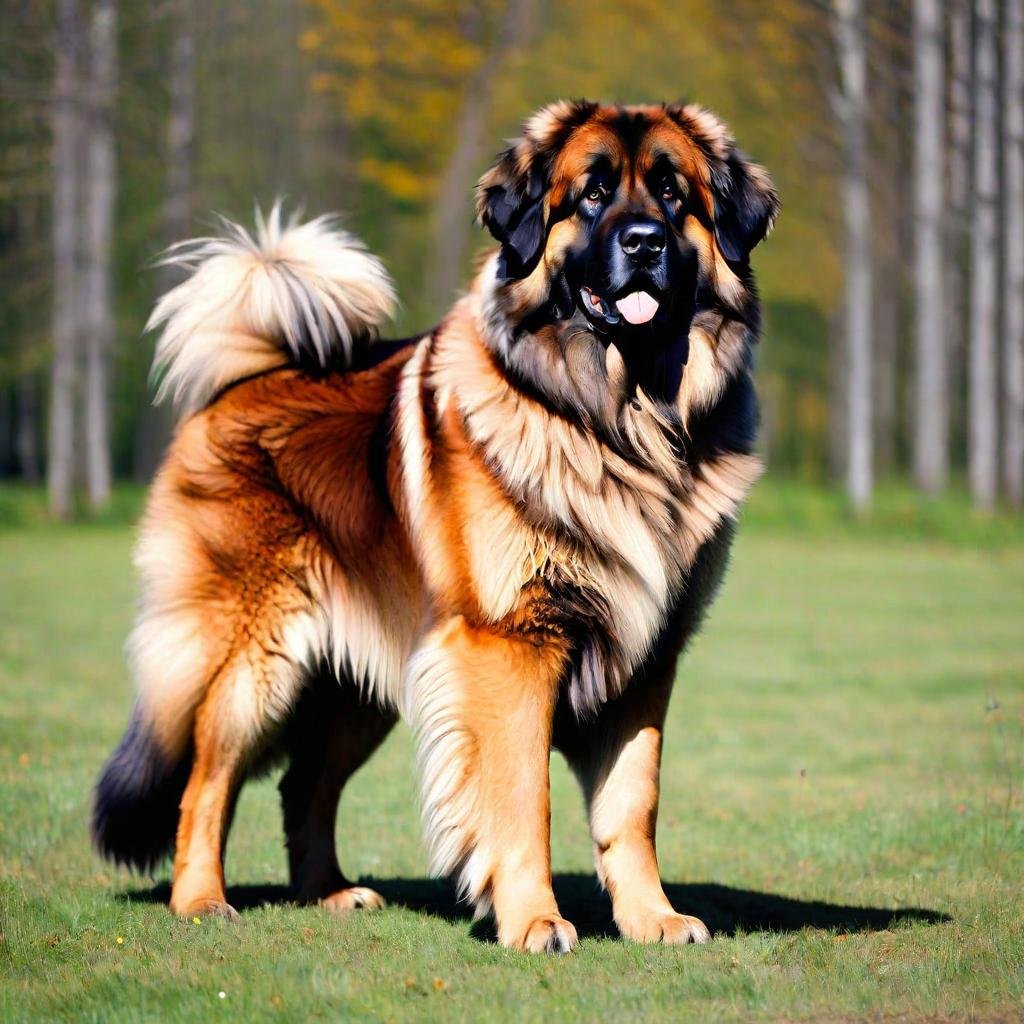
The Leonberger is a large dog breed, standing 25.5-31.5 inches tall and weighing 90-170 pounds. They live for about 8-9 years. Leonberger have a thick, lion-like coat, which is usually golden or reddish-brown. They are gentle, friendly and great with families. These dogs are known for their calm and affectionate natures, making them wonderful companions.
2. Caucasian Shepherd Dog :
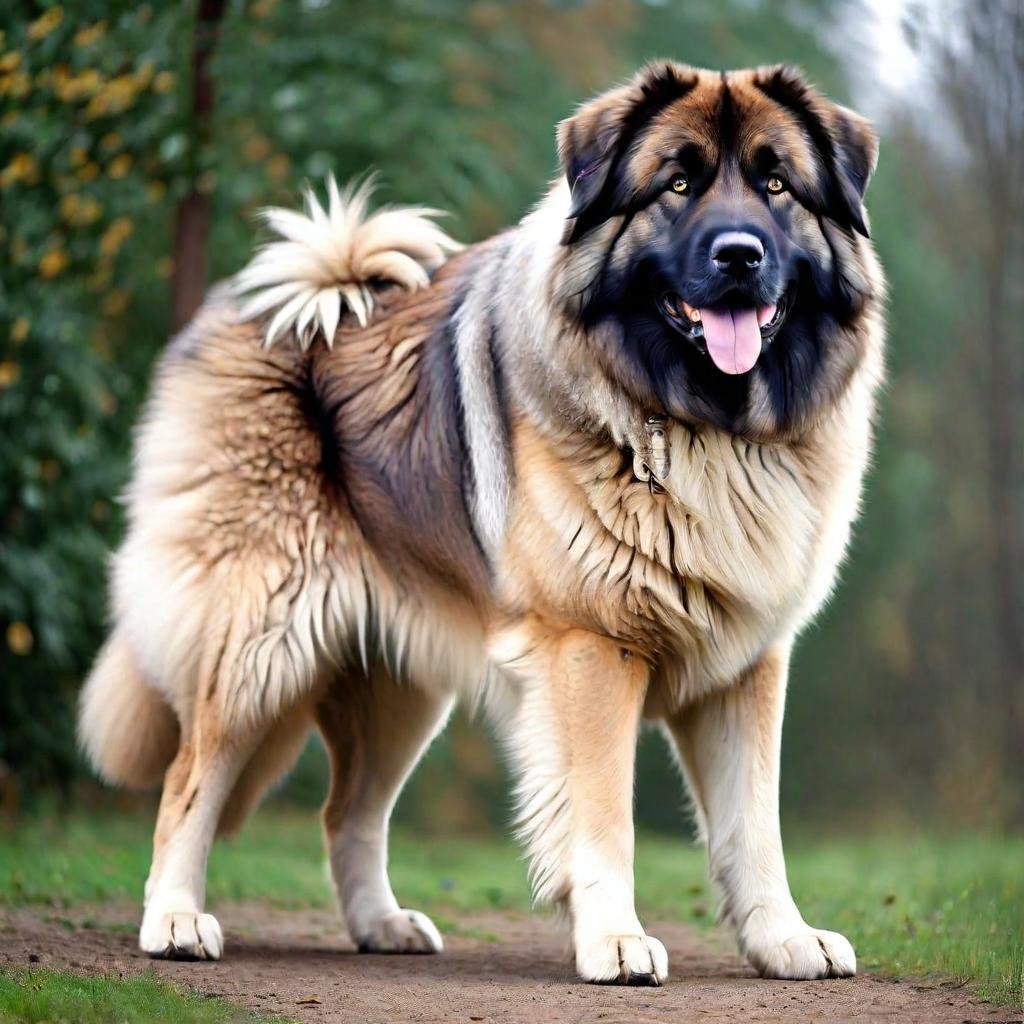
The Caucasian Shepherd Dog stands 23-30 inches tall and weighs 99-170 pounds, living about 10-12 years. They have a thick, dense coat, often gray, fawn, or white in color. These dogs are strong, protective, and fearless, making excellent guard dogs. They are loyal to their families but can be wary of strangers, requiring firm training and socialization.
3. Tibetan Mastiff :
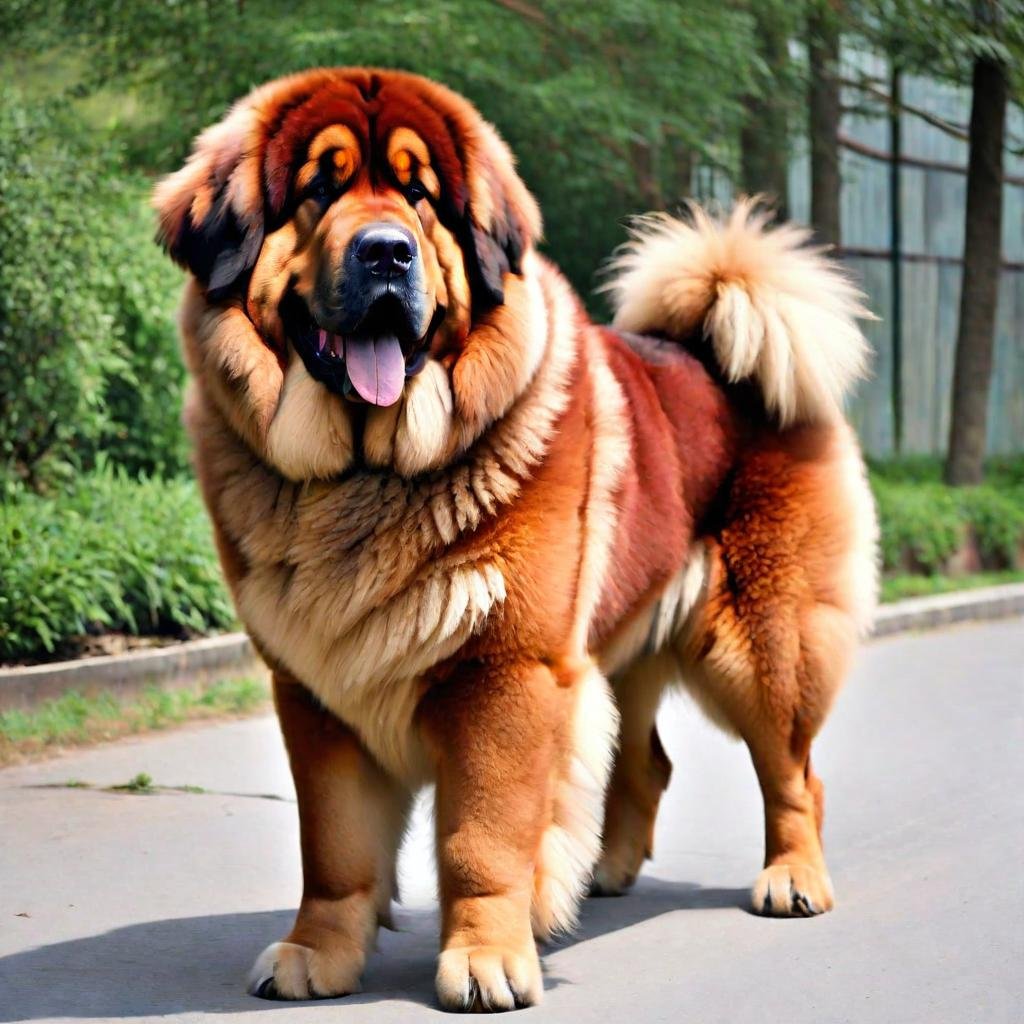
The Tibetan Mastiff stands 24-30 inches tall and weighs 70-150 pounds, with a lifespan of 10-12 years. They have a thick, double coat, which is often black, brown or blue-grey. These dogs are independent, protective and reserved, especially with strangers. They are loyal and affectionate towards their families but require strong leadership and early socialization.
4. Komondor :
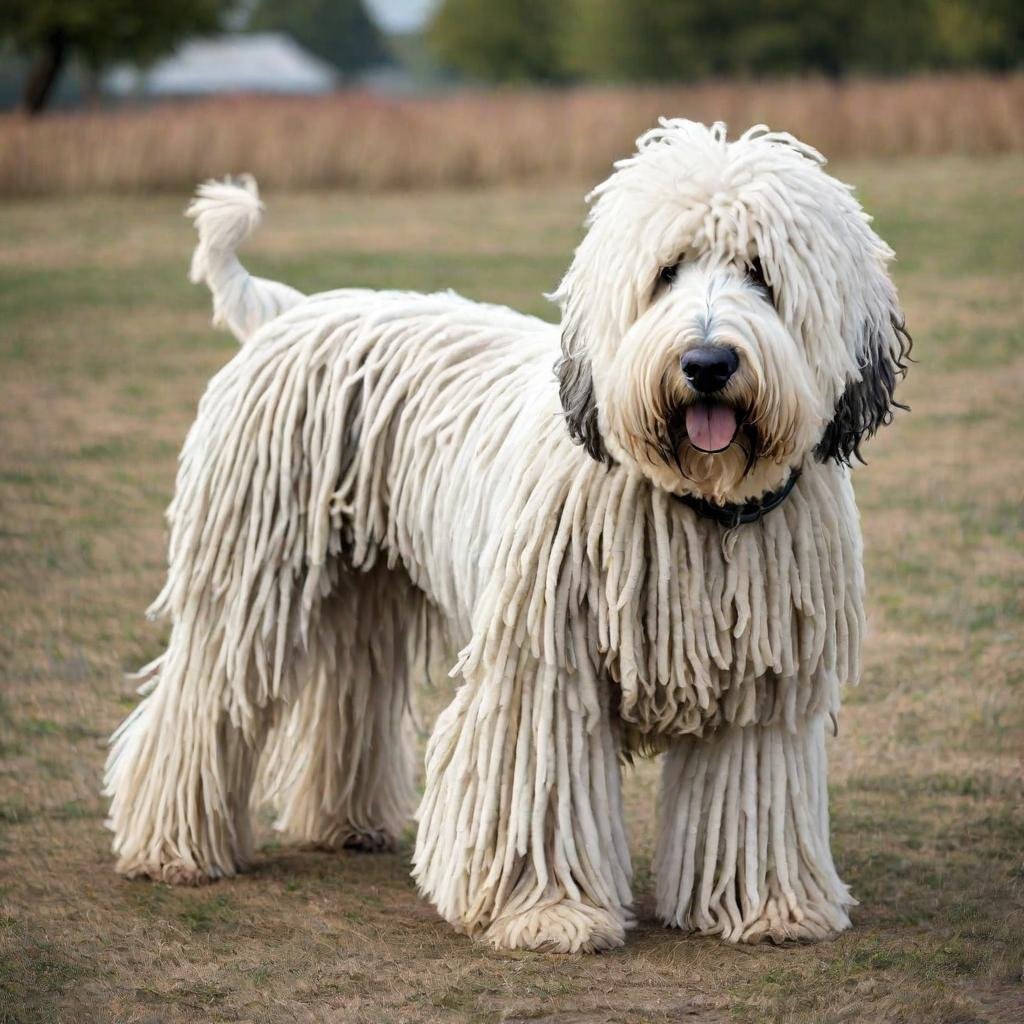
The Komondor is a large breed, standing 25.5-27.5 inches tall and weighing 80-100 pounds, living 10-12 years. They have a distinctive corded coat that resembles dreadlocks, which is usually white. Komondors are calm, courageous, loyal and protective. They are wary of strangers but devoted to their families. These dogs require firm training and socialization from an early age.
5. Bergamasco Shepherd :
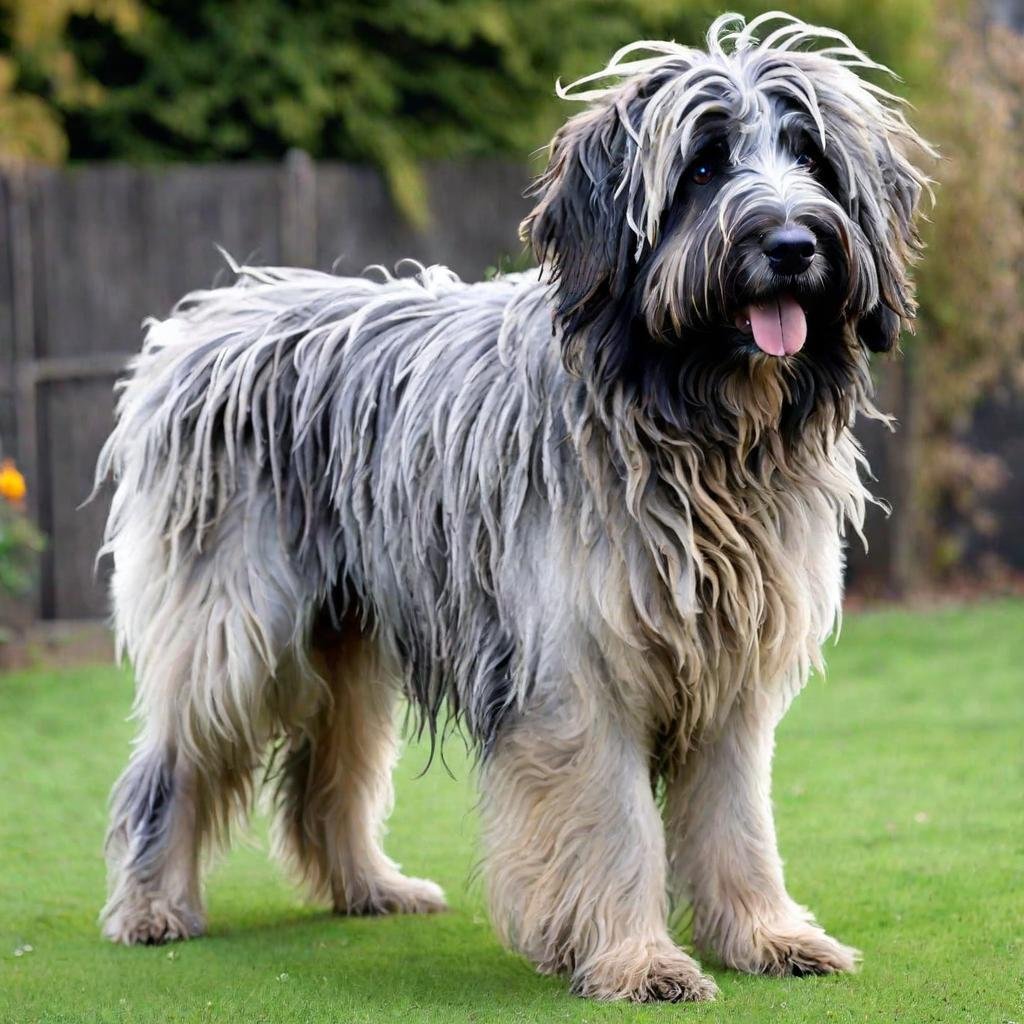
The Bergamasco Shepherd is a medium to large-sized breed, standing 22-24 inches tall and weighing 70-85 pounds, with a lifespan of 13-15 years. They have a unique coat made up of mats or “flocks” of hair, which are usually brown or black. Bergamascos are intelligent, loyal and affectionate, with a calm and steady temperament. They form strong bonds with their families and get on well with children.
6. Dogo Argentino :
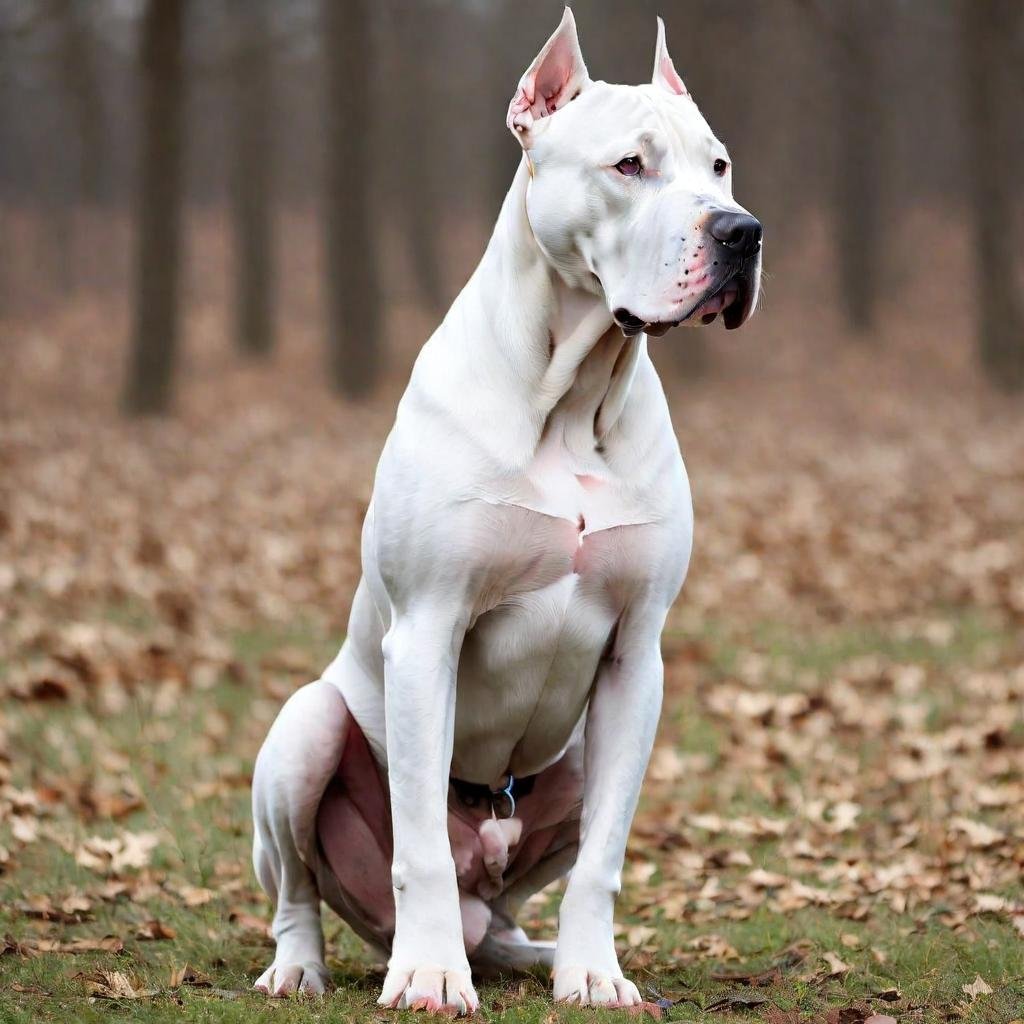
The Dogo Argentino is a muscular and athletic breed, standing 24-27 inches tall and weighing 80-100 pounds, living for about 10-12 years. They have a short white coat and a powerful build. Dogos are brave, loyal and protective, and they have a strong prey drive. They are affectionate and loyal to their families but require early socialization and training to manage their natural instincts.
7. Boerboel :
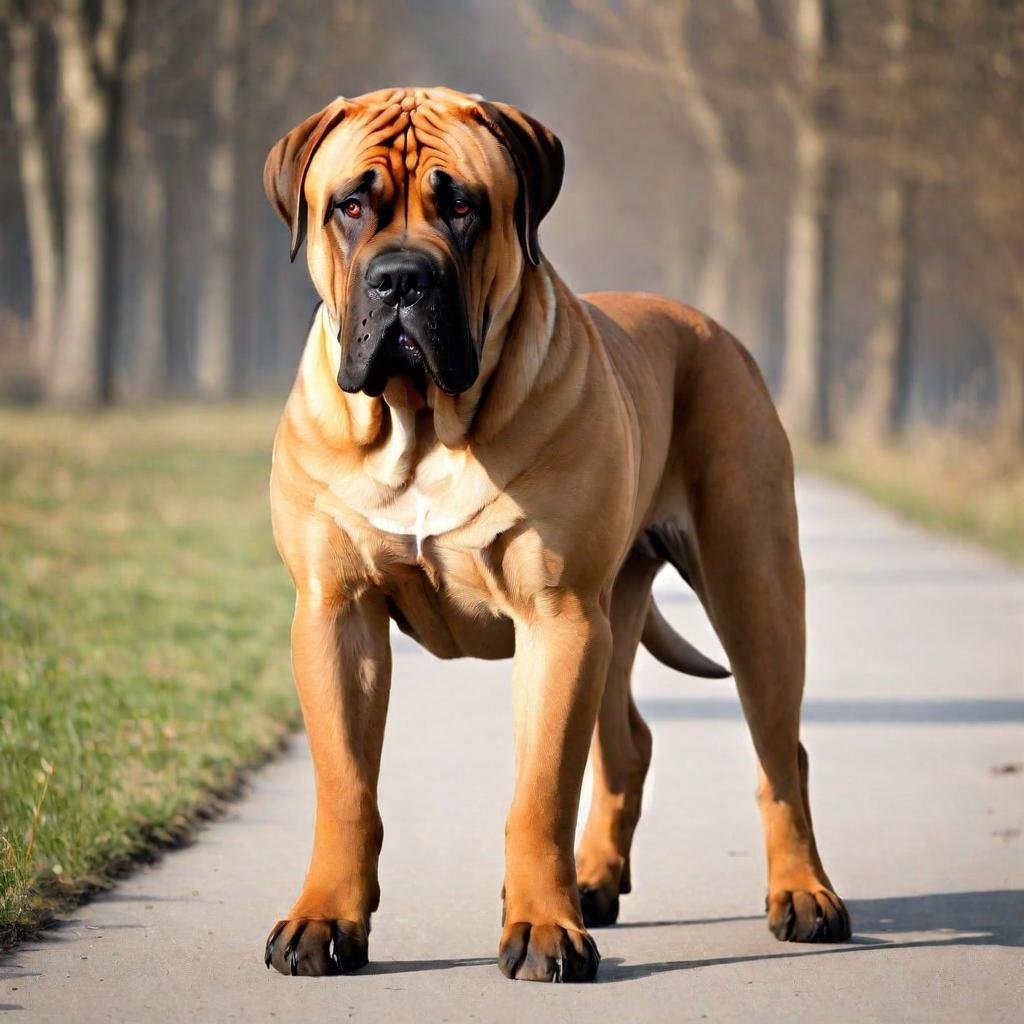
The Boerboel is a large and powerful breed, standing 22-27 inches tall and weighing 150-200 pounds, living 10-12 years. They have a short, dense coat, which is usually brown, brindle or fawn in color. Boerboels are confident, loyal, and protective, making them excellent guard dogs. They are affectionate towards their families but can be wary of strangers, requiring early socialization and training.
8. Anatolian Shepherd Dog :
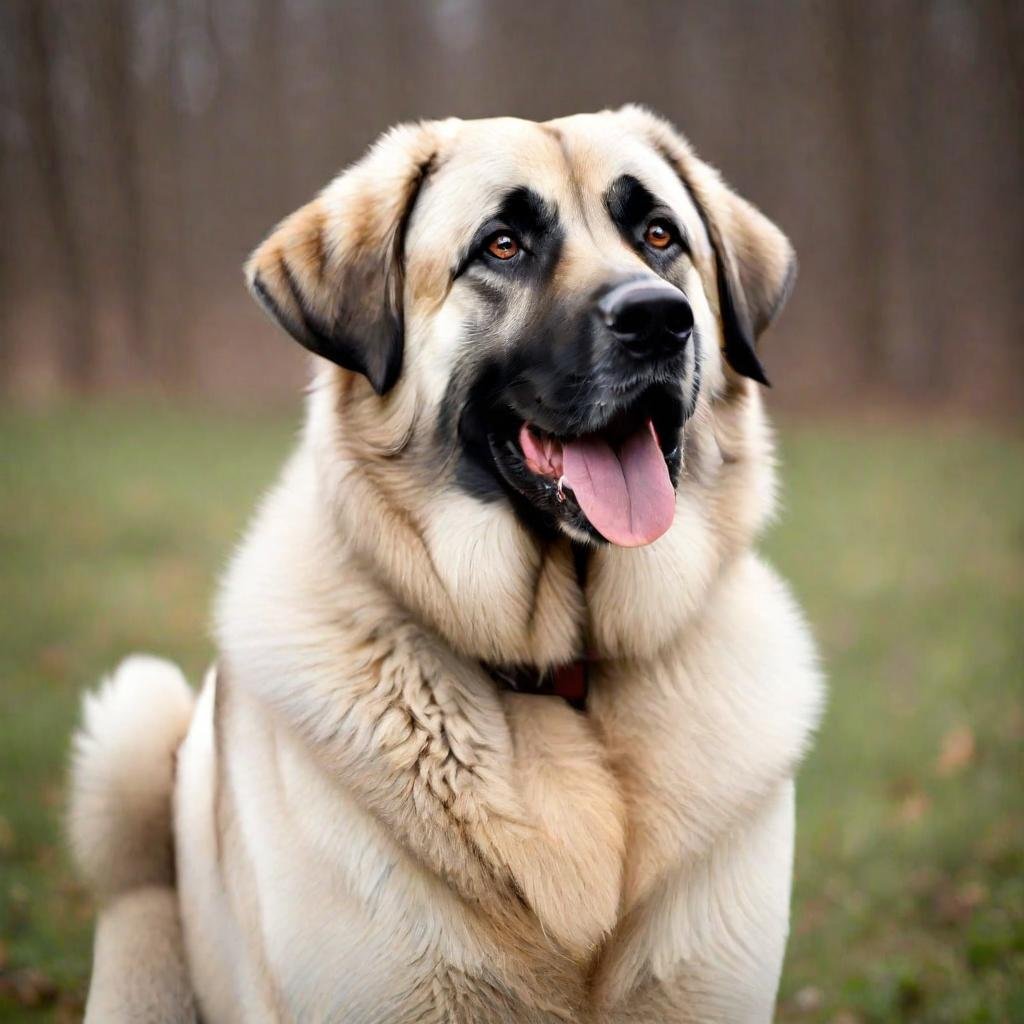
The Anatolian Shepherd Dog is a large and strong breed, standing 27-29 inches tall and weighing 80-150 pounds, and lives for 11-13 years. They have a thick, double coat of various colors, most often fawn or brindle. Anatolian Shepherds are intelligent, independent, and protective, with a calm and confident demeanor. They are devoted to their families, but can be aloof with strangers, requiring early socialization and training.
9. Kangal dog :
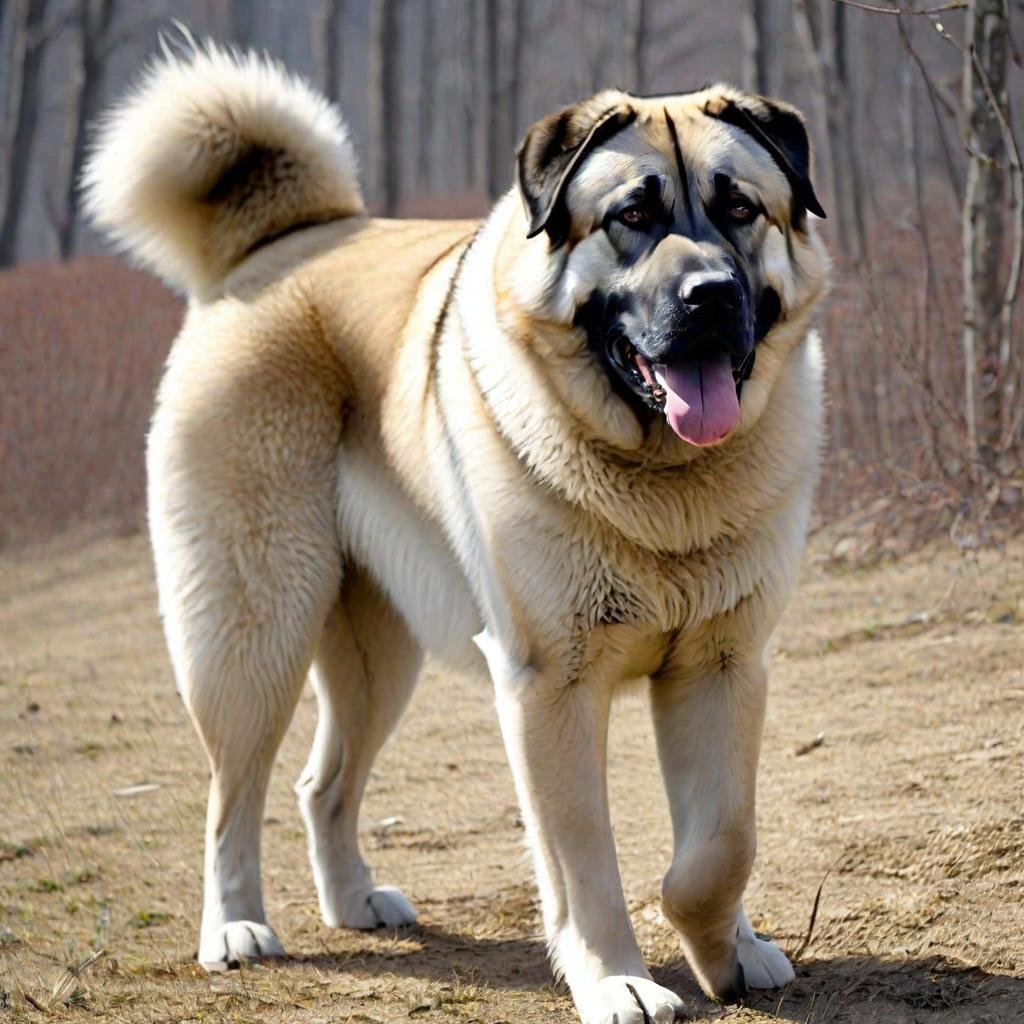
The Kangal dog is a large and powerful breed, standing 28-34 inches tall and weighing 90-145 pounds and living about 12-15 years. They have a short, dense coat, which is usually gray or brown in color. Kangals are loyal, protective and intelligent with a calm and composed nature. They are devoted to their families and make excellent guard dogs, but they require early socialization and training
10. Irish Wolfhound :
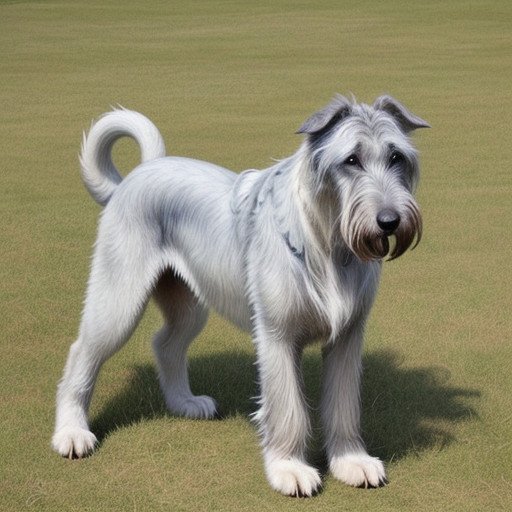
The Irish Wolfhound is one of the tallest dog breeds, standing 30-32 inches tall and weighing 105-180 pounds, with a lifespan of 6-8 years. They have a rough, fibrous coat in a variety of colors, most often gray or brindle. Irish Wolfhounds are gentle, friendly, and affectionate, making them great family pets. They are calm and patient, but due to their size they require ample space and exercise.
11. Black Russian Terrier :
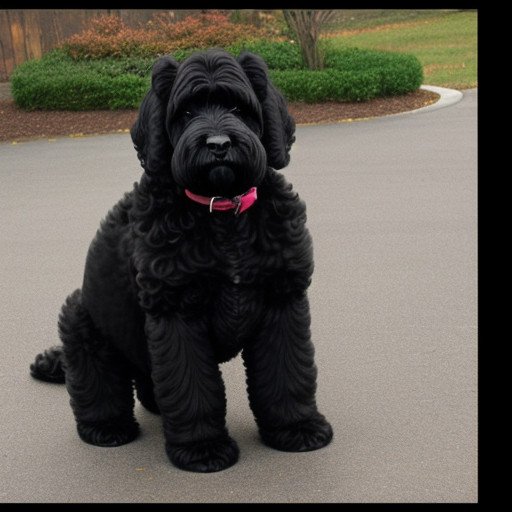
The Black Russian Terrier is a large and strong breed, standing 26-30 inches tall and weighing 80-140 pounds, living about 10-12 years. They have a dense, weather-resistant coat that is usually black. Black Russian Terriers are confident, brave, and loyal, making them excellent guard dogs. They are affectionate towards their families, but can be reserved towards strangers, which requires early socialization and training.
12. Fila Brasileiro :
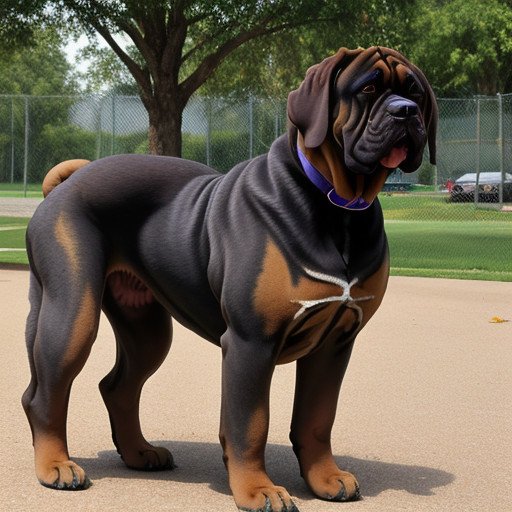
The Fila Brasileiro, or Brazilian Mastiff, is a large and powerful breed, standing 24-30 inches tall and weighing 90-110 pounds, living about 9-11 years. They have a short coat of various colors, most often brown or fawn. Filas are loyal, protective, and courageous, with a strong prey drive. They are devoted to their families, but can be wary of strangers, so they require early socialization and training.
13. Greater Swiss Mountain Dog :
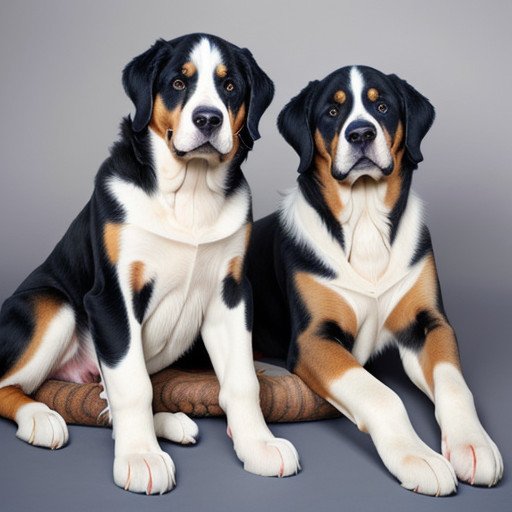
The Greater Swiss Mountain Dog is a large and strong breed, standing 23.5-28.5 inches tall and weighing 85-140 pounds, and lives about 10-12 years. They have a short, dense coat in a tricolor pattern of black, rust and white. Swiss Sys are friendly, gentle, and loyal, making them great family pets. They are calm and patient, good with children and enjoy being part of family activities.
14. Kuvasz :
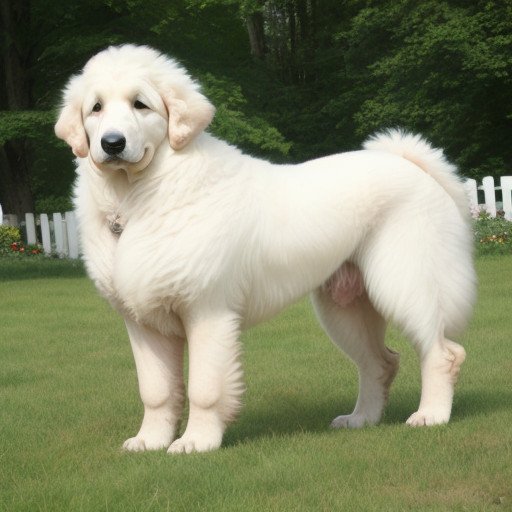
The Kuvasz is a large and classy breed, standing 26-30 inches tall and weighing 70-115 pounds, living approximately 10-12 years. They have a dense, white coat that protects from harsh weather. Kuvasz are loyal, courageous, and protective, with a strong instinct to protect their family and territory. They are affectionate towards their loved ones, but can be aloof with strangers, requiring early socialization.
15. Estrella Mountain Dog :
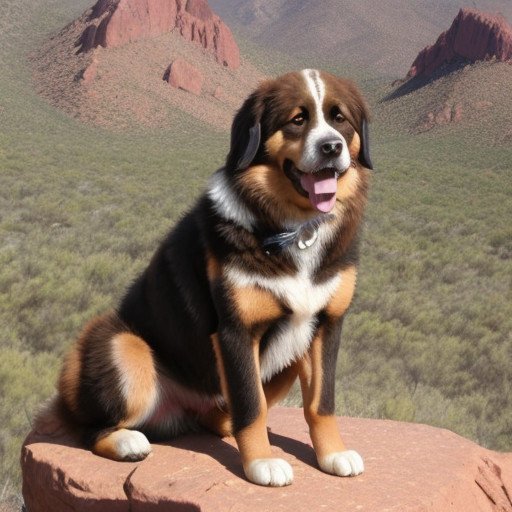
The Estrella Mountain Dog is a large and strong breed, standing 24-30 inches tall and weighing 90-110 pounds and living about 10-12 years. They have a dense, long coat of fawn, brindle or brown. Estrelas are loyal, independent, and protective, with a calm and steady temperament. They are devoted to their families, but can be reserved with strangers, requiring early socialization.
16. Tosa Inu :
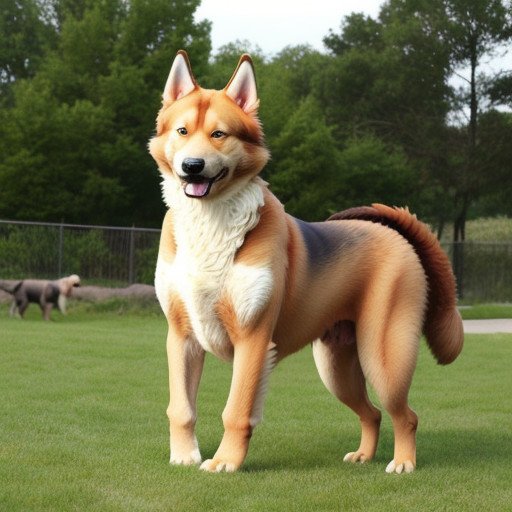
The Tosa Inu is a large and powerful breed, standing 22-24 inches tall and weighing 130-200 pounds, living about 10-12 years. They have a short, smooth coat of various colors, most often red, brown or fawn. Tosas are loyal, calm and dignified with a strong protective instinct. They are affectionate towards their families but can be wary of strangers, requiring early socialization and training.
17. Chinook :
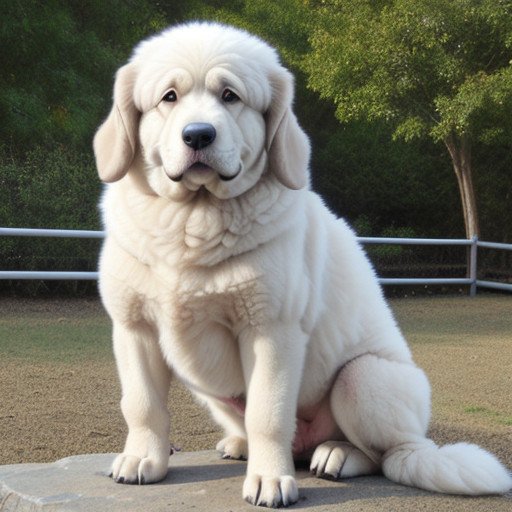
The Chinook is a medium to large-sized breed, standing 21-27 inches tall and weighing 55-90 pounds, living approximately 12-15 years. They have a dense, double coat in shades of tan, honey or sable. Chinooks are friendly, gentle and affectionate, with a calm and patient demeanor. They get along well with children and other pets, making them excellent family companions and therapy dogs.
18. Spanish Mastiff :
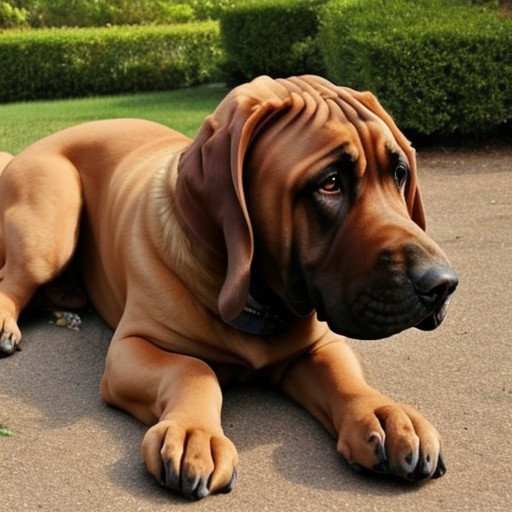
The Spanish Mastiff is a large breed, standing 28-35 inches tall and weighing 140-220 pounds, living approximately 10-12 years. They have a thick, dense coat in various shades of fawn, brindle or apricot. Spanish Mastiffs are calm, confident, and protective, with a strong instinct to protect their family and property. They are affectionate towards their loved ones but can be wary of strangers.
19. Pyrenean Mastiff :
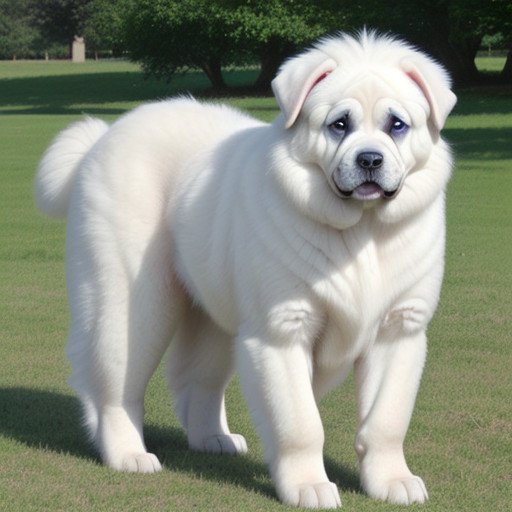
The Pyrenean Mastiff is a large and imposing breed, standing 28-32 inches tall and weighing 150-200 pounds and living about 10-12 years. They have a thick, dense coat of white or gray color. Pyrenean Mastiffs are calm, gentle, and protective, making them excellent guardians of livestock and family. They are affectionate towards their loved ones but can be wary of strangers, requiring early socialization.
20. Akbash :
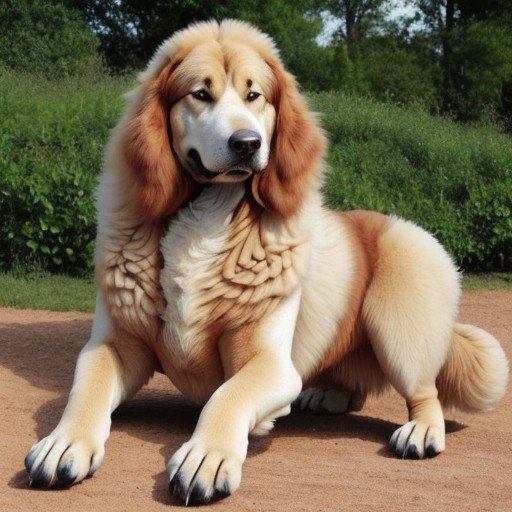
The Akbash is a large and strong breed, standing 28-34 inches tall and weighing 90-140 pounds, living about 10-12 years. They have a thick, white coat that protects from weather and predators. Akbash dogs are calm, independent, and protective, with a strong instinct to guard livestock. They are loyal to their families, but can be aloof with strangers, requiring early socialization.
Each of these breeds has its own unique history, characteristics, and appeal, making them attractive choices for those interested in rare and large dogs.
Living with a Rare Large Dog Breed ;
Living with rare large breed dogs can be an exciting and rewarding experience, but it also comes with unique considerations. These majestic dogs need ample space to roam and play, making them better suited to homes with large yards or access to open areas. Their size means they need plenty of exercise to stay healthy and happy, so daily walks and play are essential.
Another important aspect of living with rare large breed dogs is grooming. Depending on the breed’s coat type, care needs can vary from moderate to high maintenance. Regular brushing, occasional bathing, and nail trimming is necessary to keep their coat and skin healthy.
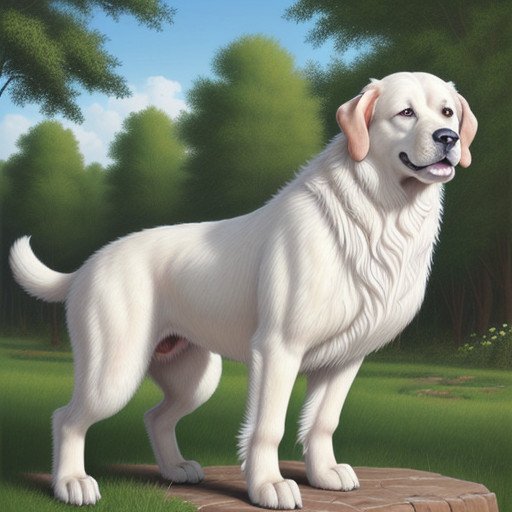
Training and socialization is important for rare large dog breeds to ensure they are well-behaved and comfortable in a variety of situations. Early training helps establish boundaries and teaches them to interact positively with people and other animals.
Additionally, owning the rare large dog breed requires a commitment to their health care needs. Regular vet checkups, vaccinations and preventive care are essential for their well-being.
Despite these considerations, living with rare large breed dogs can provide immense pleasure and companionship. Their loyalty, affection and unique personality make them beloved members of the family.
Finding a Rare Large Dog Breed ;
Finding a rare large dog breed can be an exciting journey, but it requires careful research and consideration. Start by searching for breed-specific websites, forums, and social media groups dedicated to rare large dog breeds. Reach out to reputable breeders who specialize in the breed you are interested in and ask questions about their breeding practices, health testing, and available puppies.
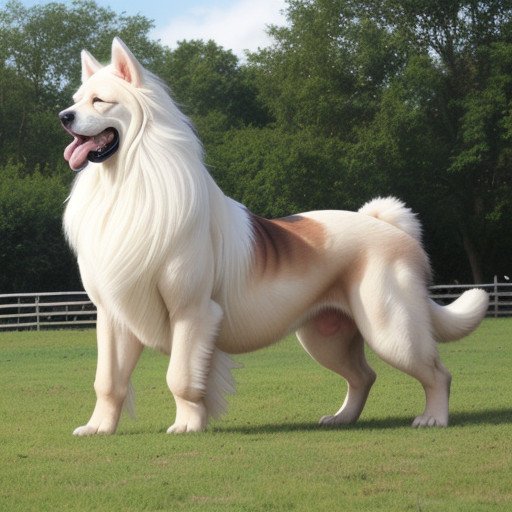
Additionally, consider contacting rare large dog breed clubs and rescue organizations. These groups often have valuable resources and connections to help you find the right partner. Keep in mind that adoption is also an option, as many rare large dog breeds need loving homes in shelters or rescue groups.
When evaluating potential breeders or rescue organizations, pay attention to red flags such as lack of transparency, unhealthy living conditions, or breeding for profit rather than the dogs’ well-being. If possible visit the facilities and ask to meet the parent dogs to assess their temperament and health.
Finding the right rare large dog breed may take time and patience, but the reward of adding a unique and loving companion to your family is well worth the effort.
Challenge and Considerations ;
Owning a rare large dog breed comes with its own challenges and considerations that potential owners should be aware of. One challenge is finding a reputable breeder or rescue organization, as rare breeds can be difficult to find and may be at risk of exploitation by unscrupulous individuals.
Health concerns are also a consideration, as some rare large dog breeds may be susceptible to certain genetic conditions due to the limited genetic diversity within the breed. Additionally, the large size of these dogs means they may be more prone to joint problems and other health issues as they age.
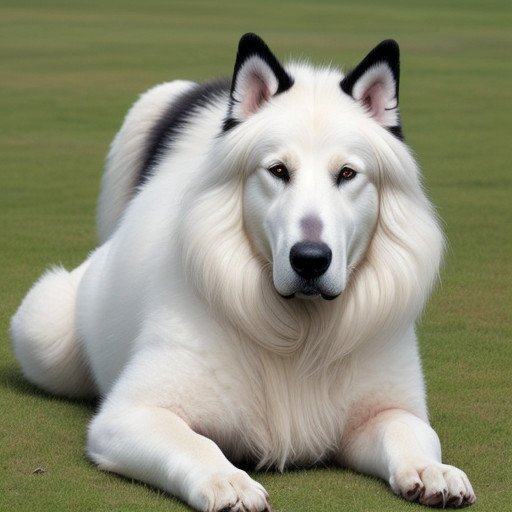
Financial commitment is another factor to consider, as rare large dog breeds often come with a high upfront cost to purchase or adopt, as well as ongoing expenses for food, grooming, veterinary care, and training.
Legal restrictions may also be a concern, as some rare large dog breeds may be subject to breed-specific laws or restrictions in some areas due to their size or perceived aggressiveness.
Despite these challenges and considerations, the rewards of owning a rare large dog breed, such as their unique appearance, loyalty and companionship, can make the effort and investment worthwhile for dedicated and responsible owners.
** Conclusion **
Ultimately, rare large dog breeds offer a unique and rewarding experience for those willing to take on the challenge. Although they come with their own challenges and considerations, including finding reputable breeders, addressing health concerns, and navigating potential legal restrictions, the rewards of owning one of these majestic animals are immense.
From their impressive size and charming appearance to their unwavering loyalty and affectionate nature, rare large dog breeds bring something special to the lives of their owners. They become beloved members of the family, providing companionship, security and endless happiness.
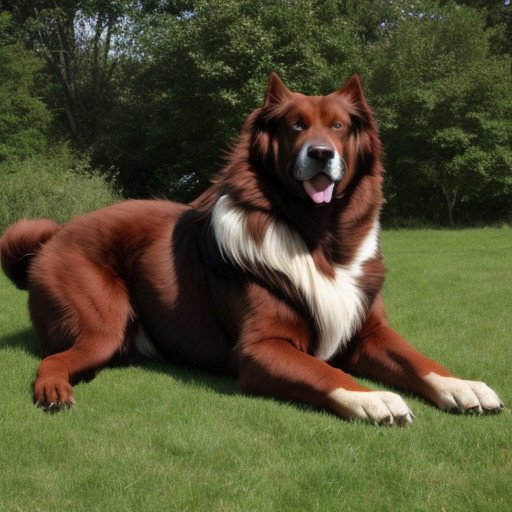
Despite their rarity, these breeds deserve just as much love and care as any other dog. By doing thorough research, seeking out responsible breeders or rescue organizations, and committing to their ongoing needs, owners can ensure that their rare large dog breed thrives in their care.
Ultimately, the bond formed with a rare large dog breed is unlike any other breed, making the journey to own one a truly unique and gratifying experience. So, for those with a love for the extraordinary, embracing the world of rare large dog breeds can be a decision that enriches their lives in countless ways.
Additional Resources ;
For those interested in learning more about rare large dog breeds, there are many valuable resources available to learn further.
1. Breed Clubs and Organizations:
Many rare large dog breeds have dedicated breed clubs and organizations that provide valuable information, support, and networking opportunities for owners and enthusiasts. These clubs often provide breed-specific publications, programs, and educational resources.
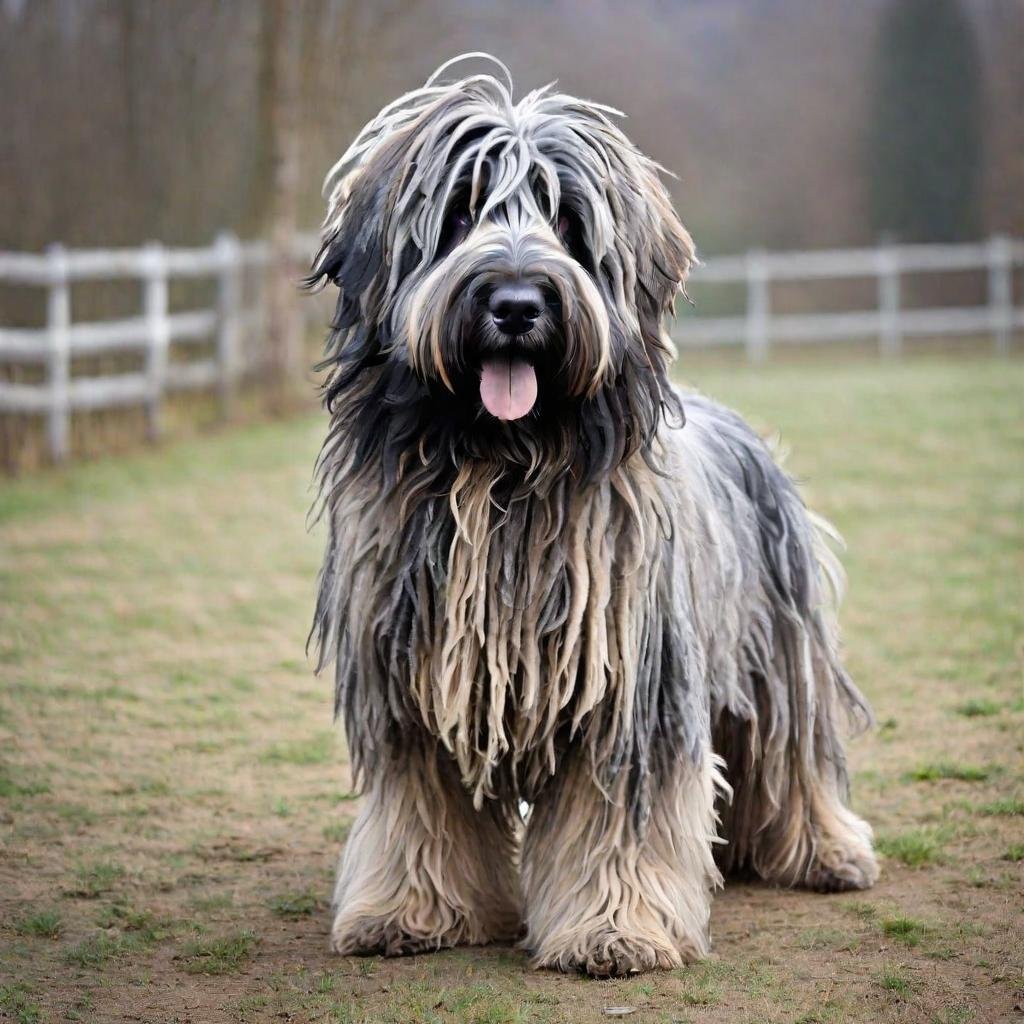
2. Books and Publications:
There are many books and publications available that focus on rare large dog breeds, providing in-depth information on their history, characteristics, care, and training. These resources can be found online, in libraries, or through specialty bookstores.
3. Online Forums and Communities:
Joining online forums and communities dedicated to rare large dog breeds can be a great way to connect with other owners and enthusiasts, share experiences, ask questions, and get valuable advice and support.
4. Breed-Specific Websites:
Many rare large dog breeds have dedicated websites run by breed clubs, breeders or enthusiasts. These websites often provide extensive information on breed standards, health considerations, training tips, and breeder directories.
5. Local Breeders and Events:
Attending local dog shows, events, and meetups can provide opportunities to meet breeders, owners, and rare large breed dogs in person. These events can also be a valuable source of information and networking for those interested in finding or learning more about a specific breed.
By using these additional resources, enthusiasts can deepen their understanding and appreciation of rare large dog breeds and make informed decisions about ownership, care, and participation in the breed community.
You might be interested in reading this post as well Medium Large Dog Breeds
“Unveiling the Giants: Exploring Rare Large Dog Breeds” ** Introduction ** When it comes to choosing a furry companion, many dog lovers are attracted to the idea of having a large breed at their side. But have you ever considered the allure of rare large dog breeds? These majestic dogs stand out not only because…
You can read this post https://tomeshnews.co.in/white-large-dog-breeds/
What makes rare large dog breeds different from more common breeds?
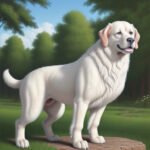
Rare large dog breeds are often characterized by their unique appearance, history, and temperament. They tend to have distinct physical features and personalities that set them apart from more common breeds, making them appealing to those seeking something extraordinary in a canine companion.
Are rare large dog breeds suitable for families with children?
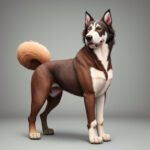
While many rare large dog breeds can make excellent family pets, it’s essential to consider each breed’s temperament, energy level, and size. Some breeds may be more gentle and patient with children, while others may be better suited to households with older kids or experienced dog owners.
How can I find a reputable breeder for a rare large dog breed?

Finding a reputable breeder for a rare large dog breed requires research and diligence. Look for breeders who prioritize the health and well-being of their dogs, conduct health screenings, and provide proper socialization. Ask for referrals from breed clubs, visit the breeder’s facilities, and ask questions about their breeding practices and philosophy.
Are rare large dog breeds prone to specific health issues?
Like all dog breeds, rare large dog breeds may be predisposed to certain genetic health conditions. Limited genetic diversity within some rare breeds can increase the risk of inherited disorders. It’s essential to work with a reputable breeder who performs health screenings and provides documentation of the dog’s health history.
How much exercise do rare large dog breeds need?
Rare large dog breeds typically require regular exercise to stay healthy and happy. Daily walks, playtime, and mental stimulation are essential to prevent boredom and maintain their physical and mental well-being. The specific exercise needs may vary depending on the breed’s energy level, age, and individual preferences.
